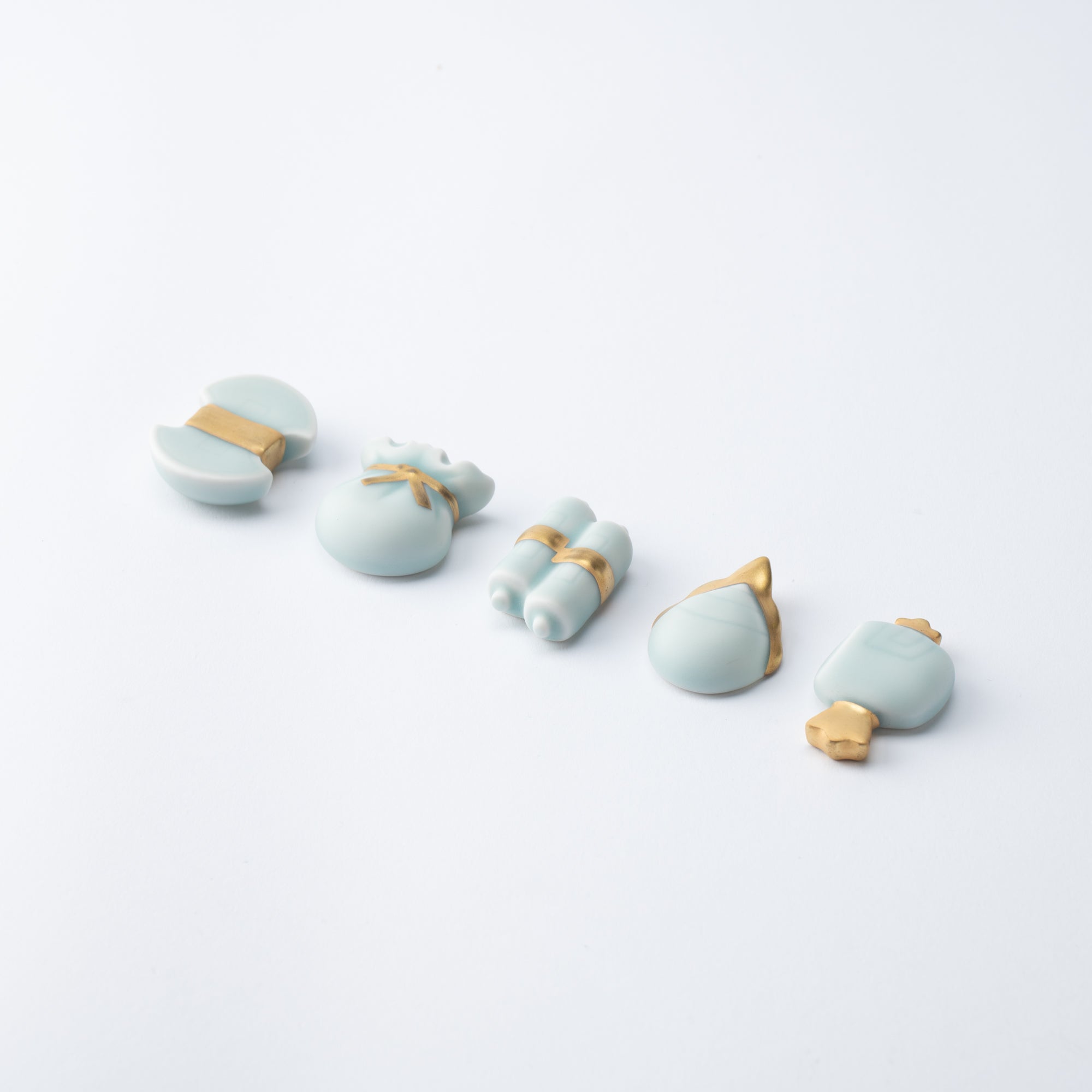
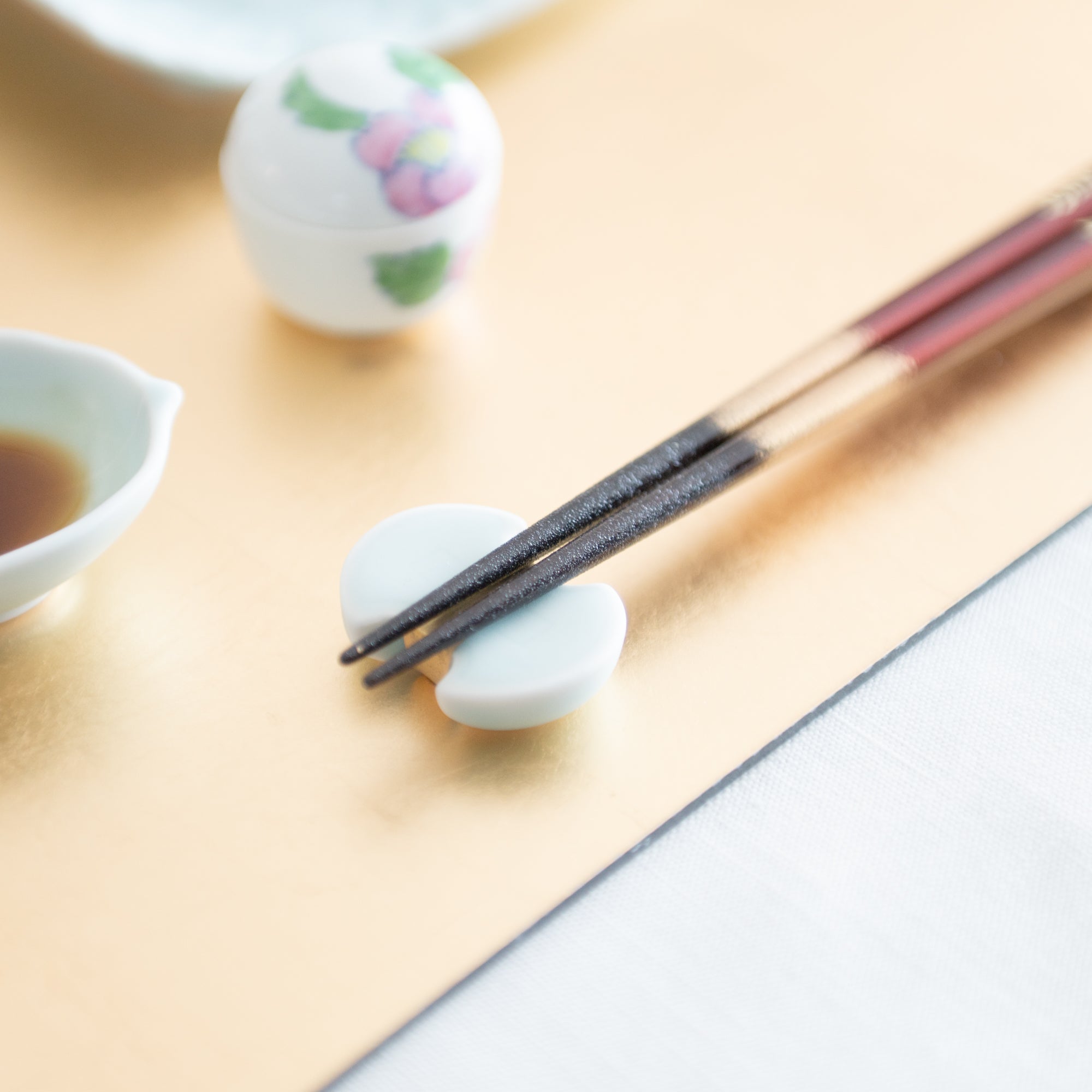
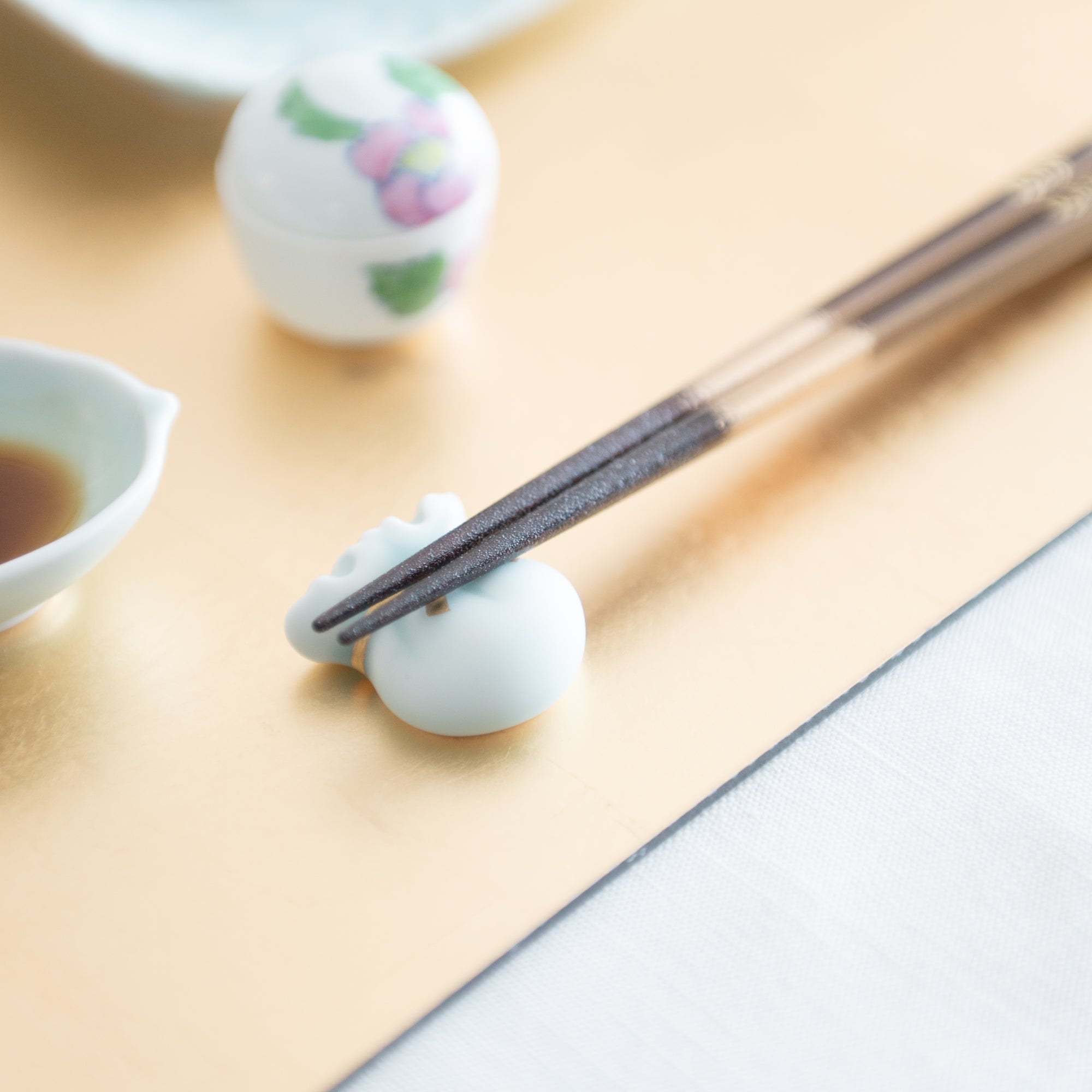
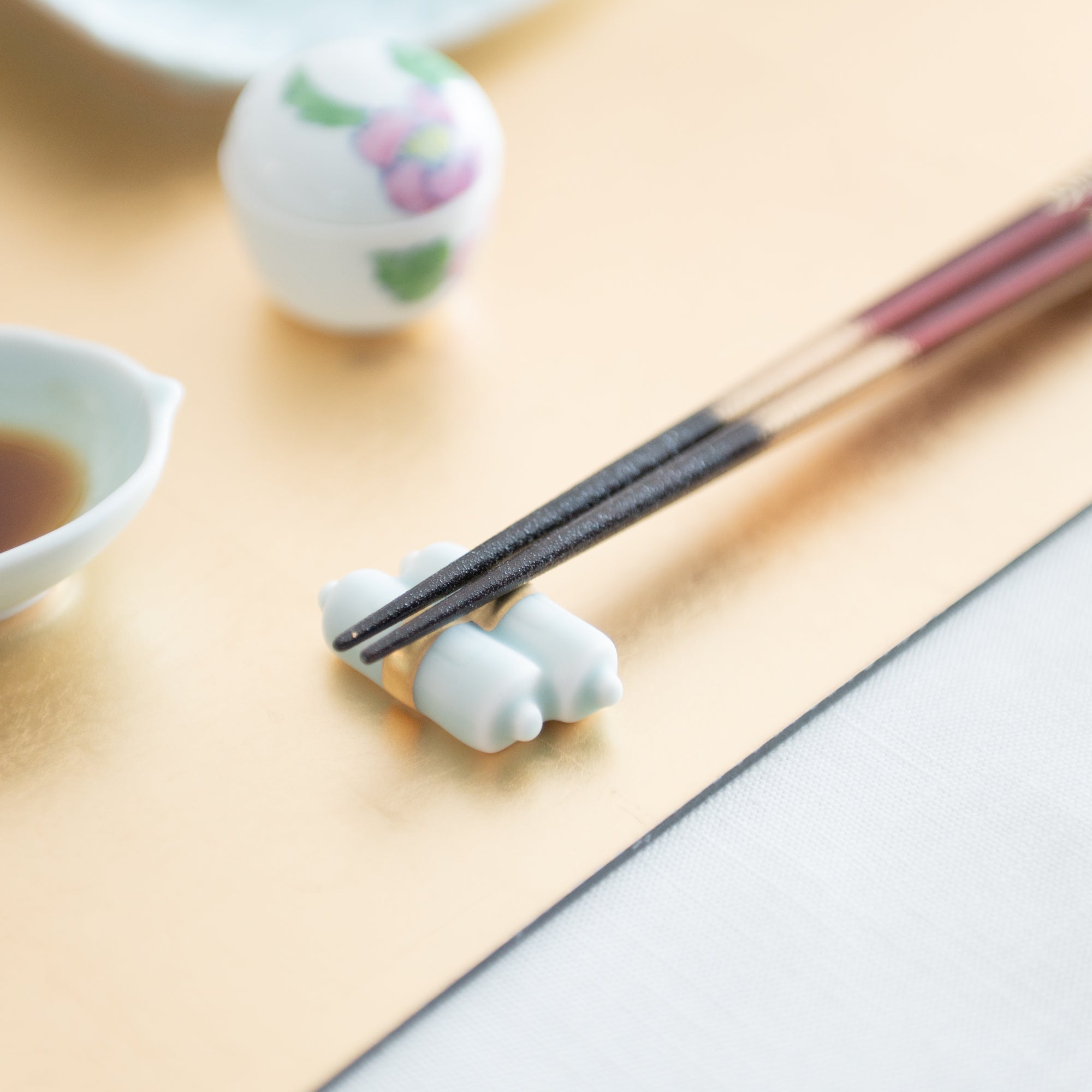
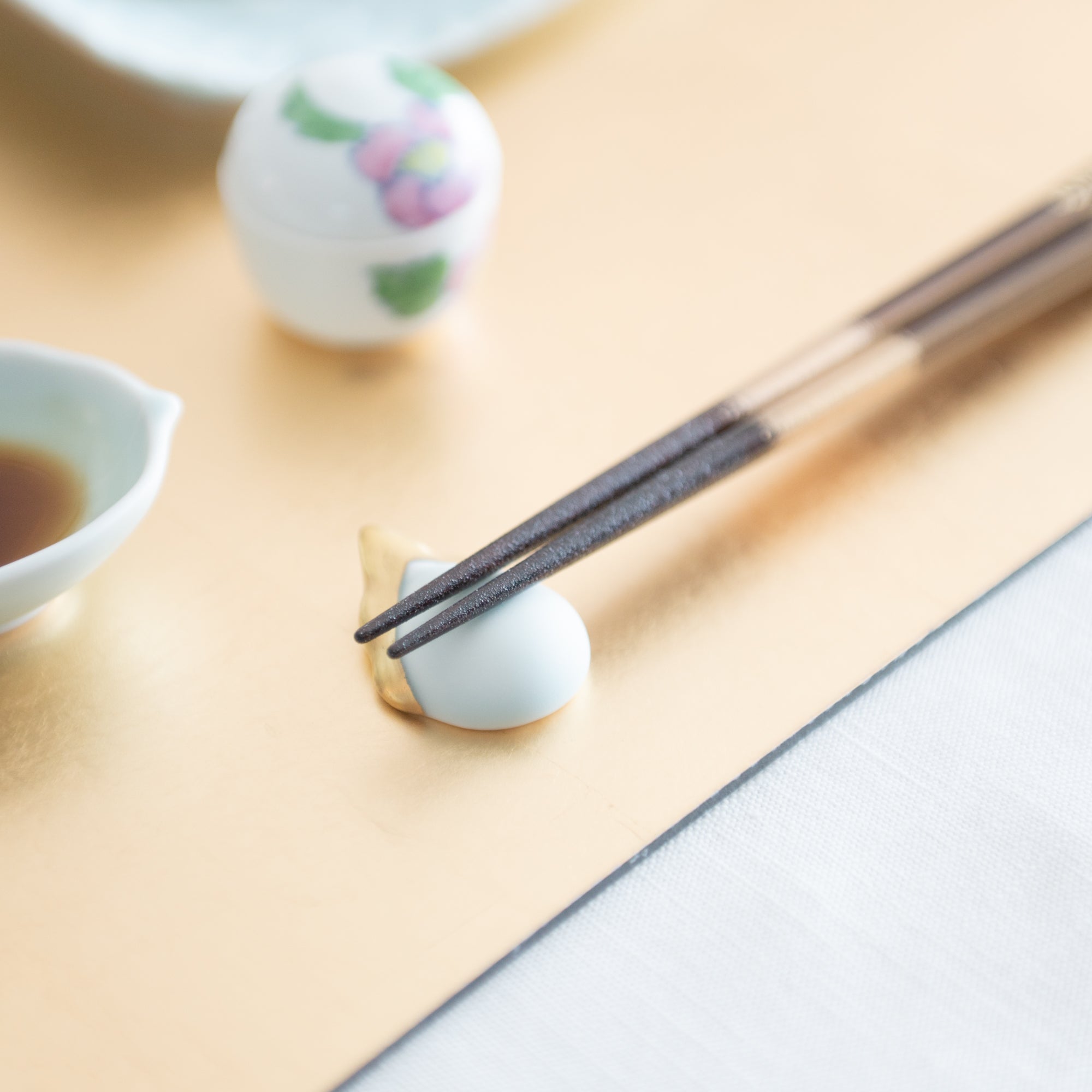
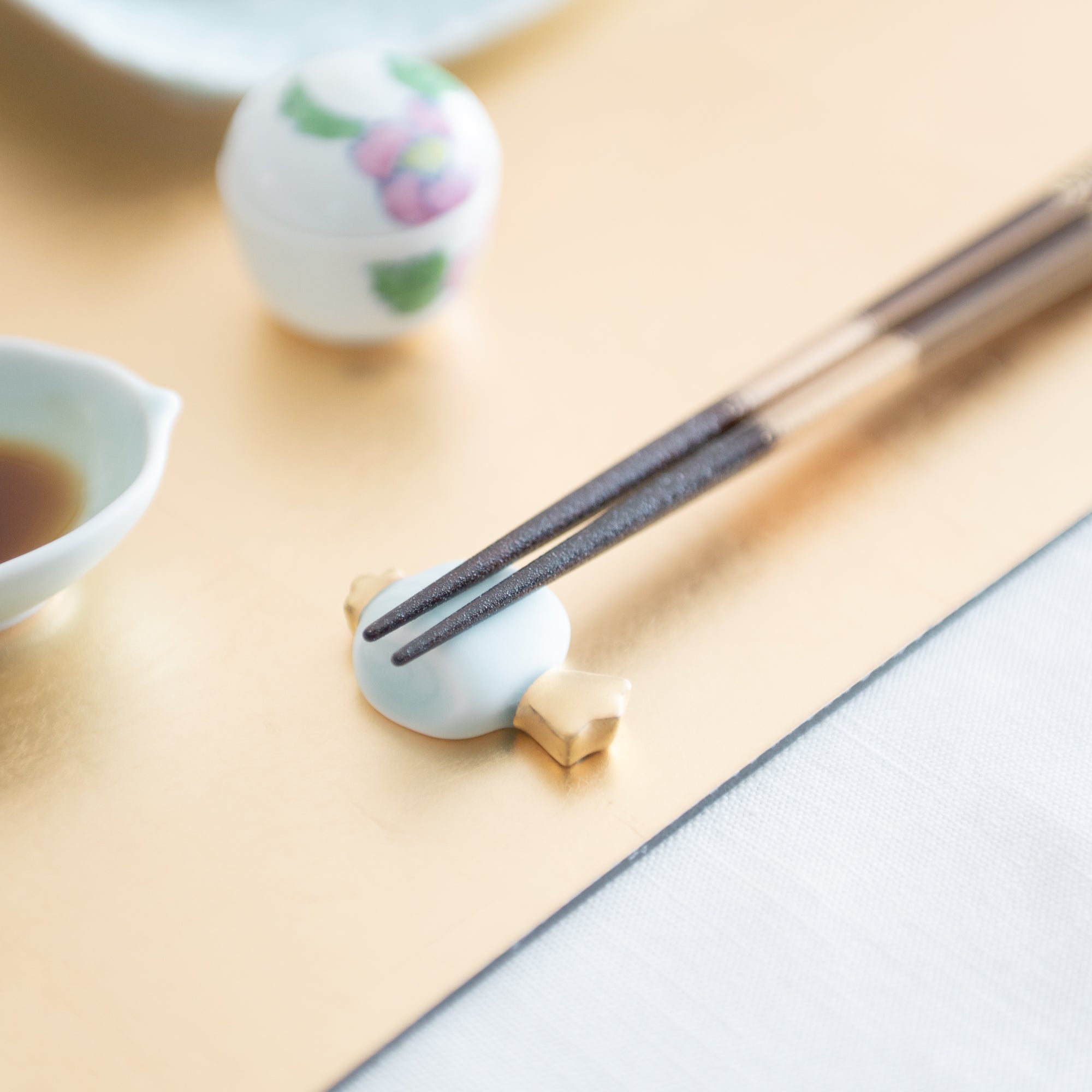
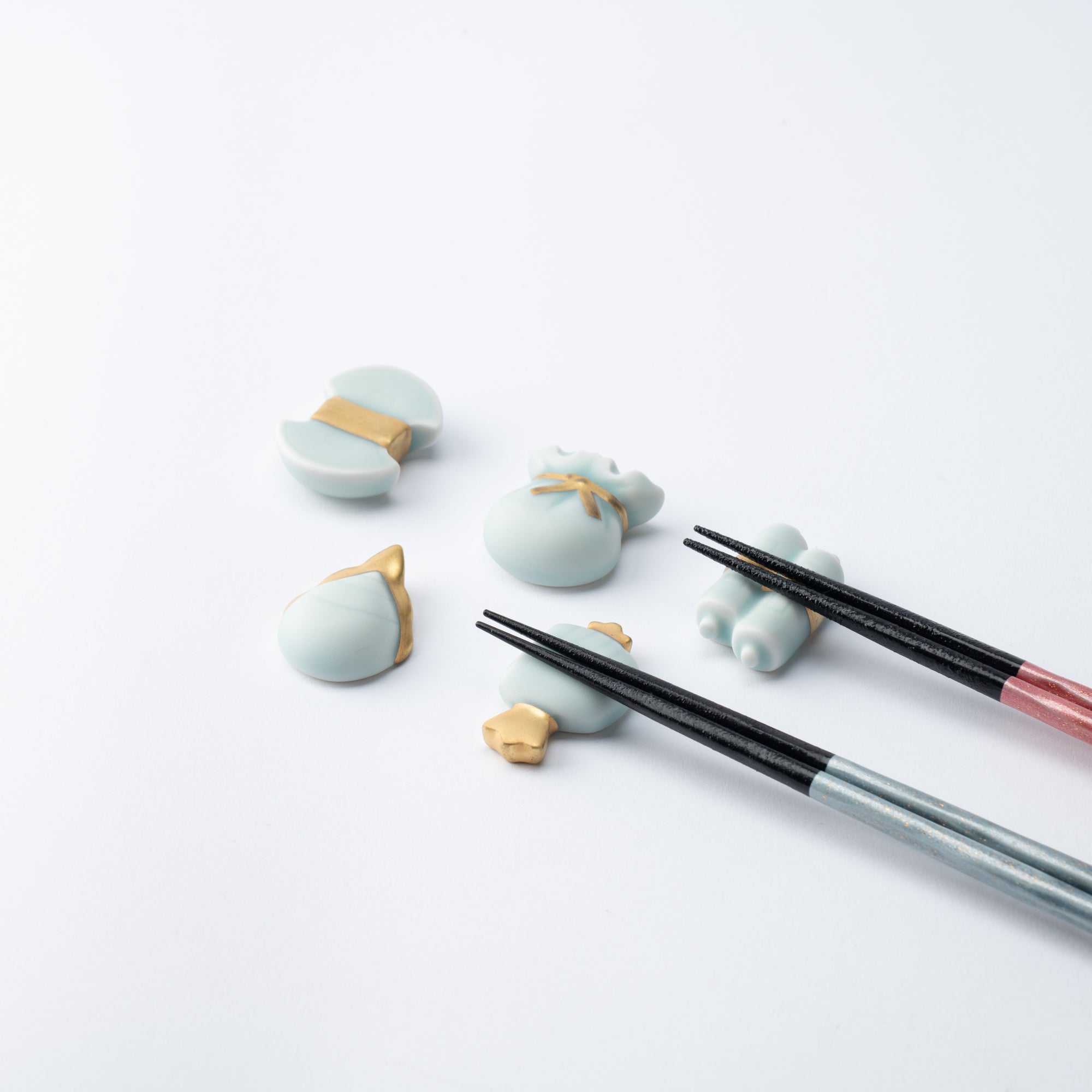
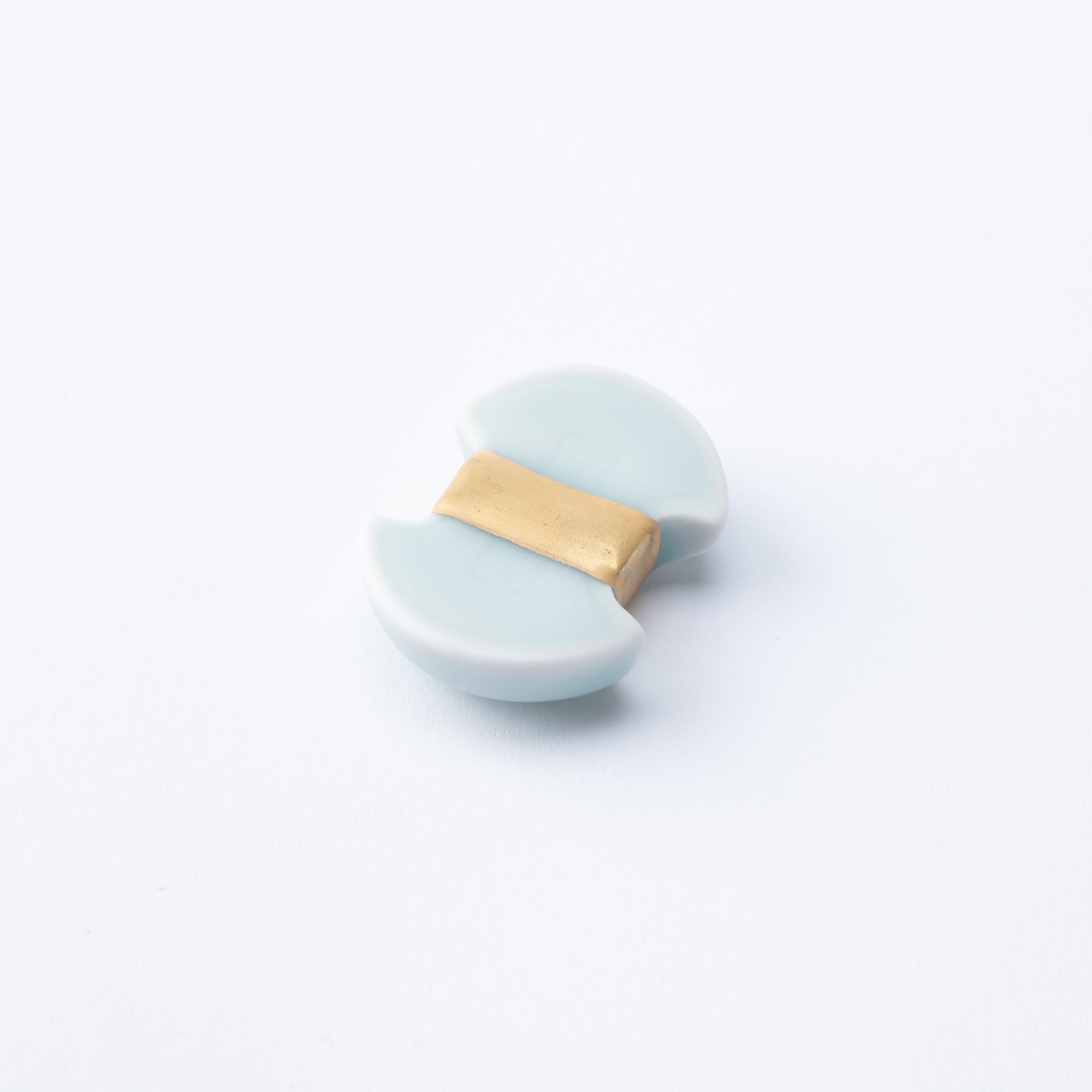
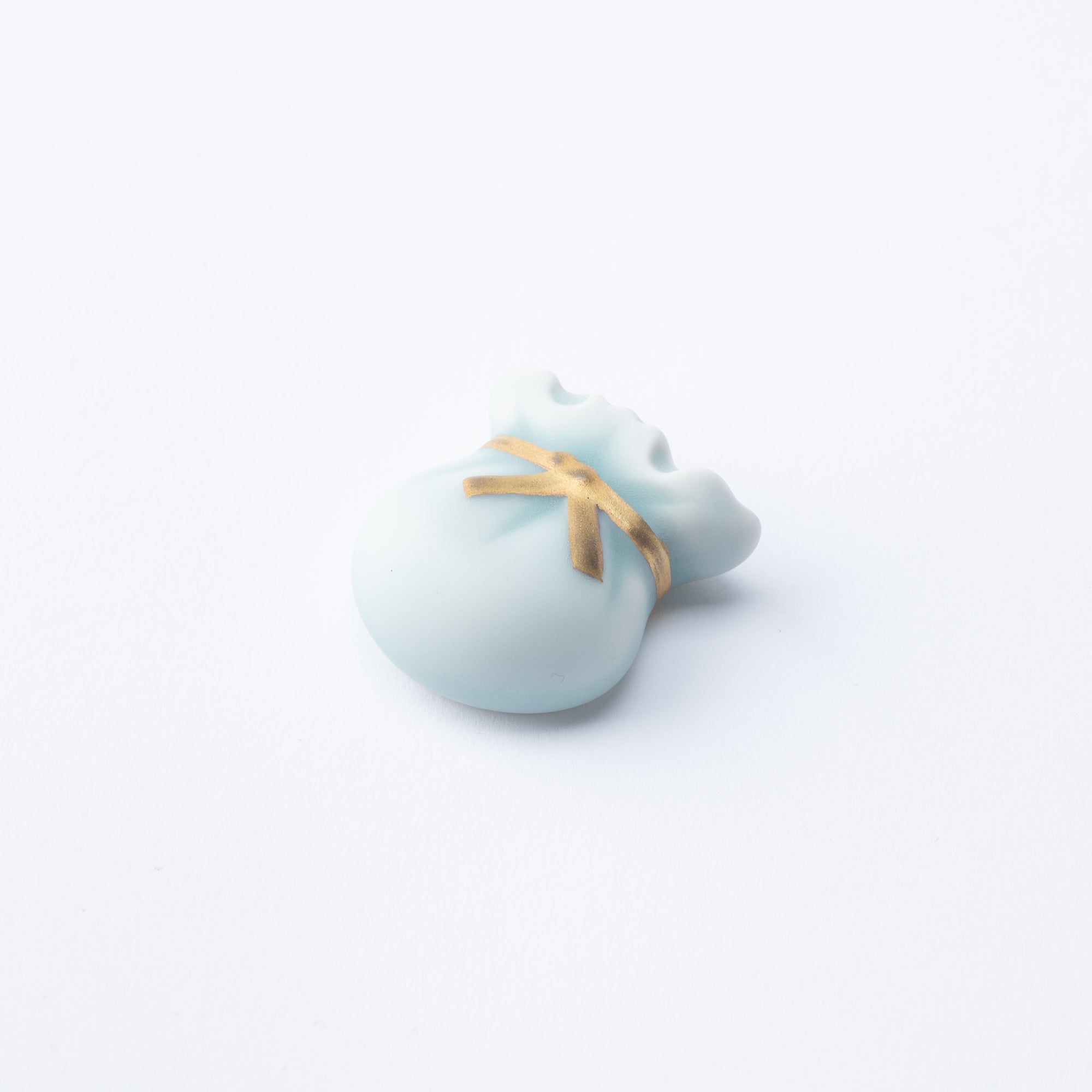
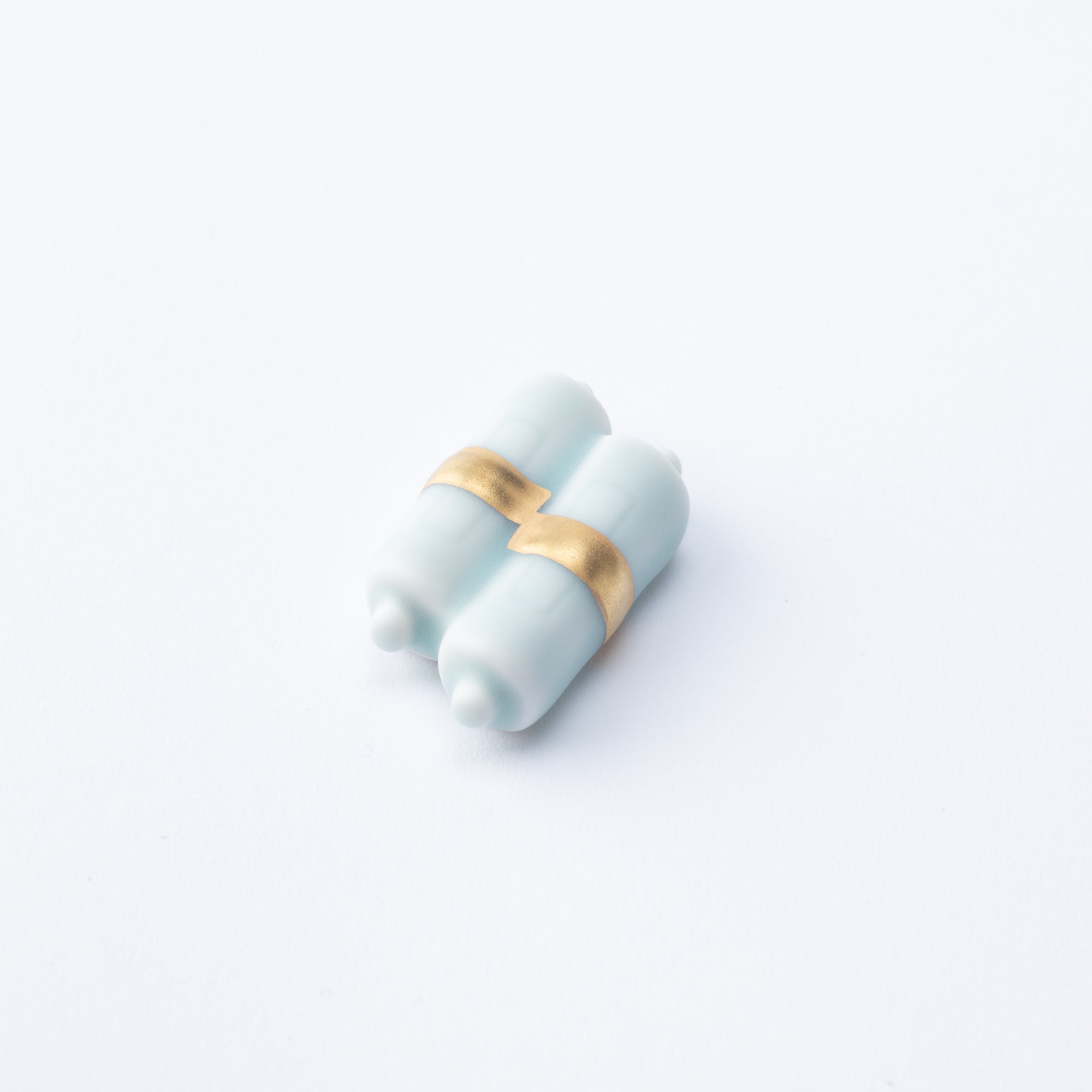
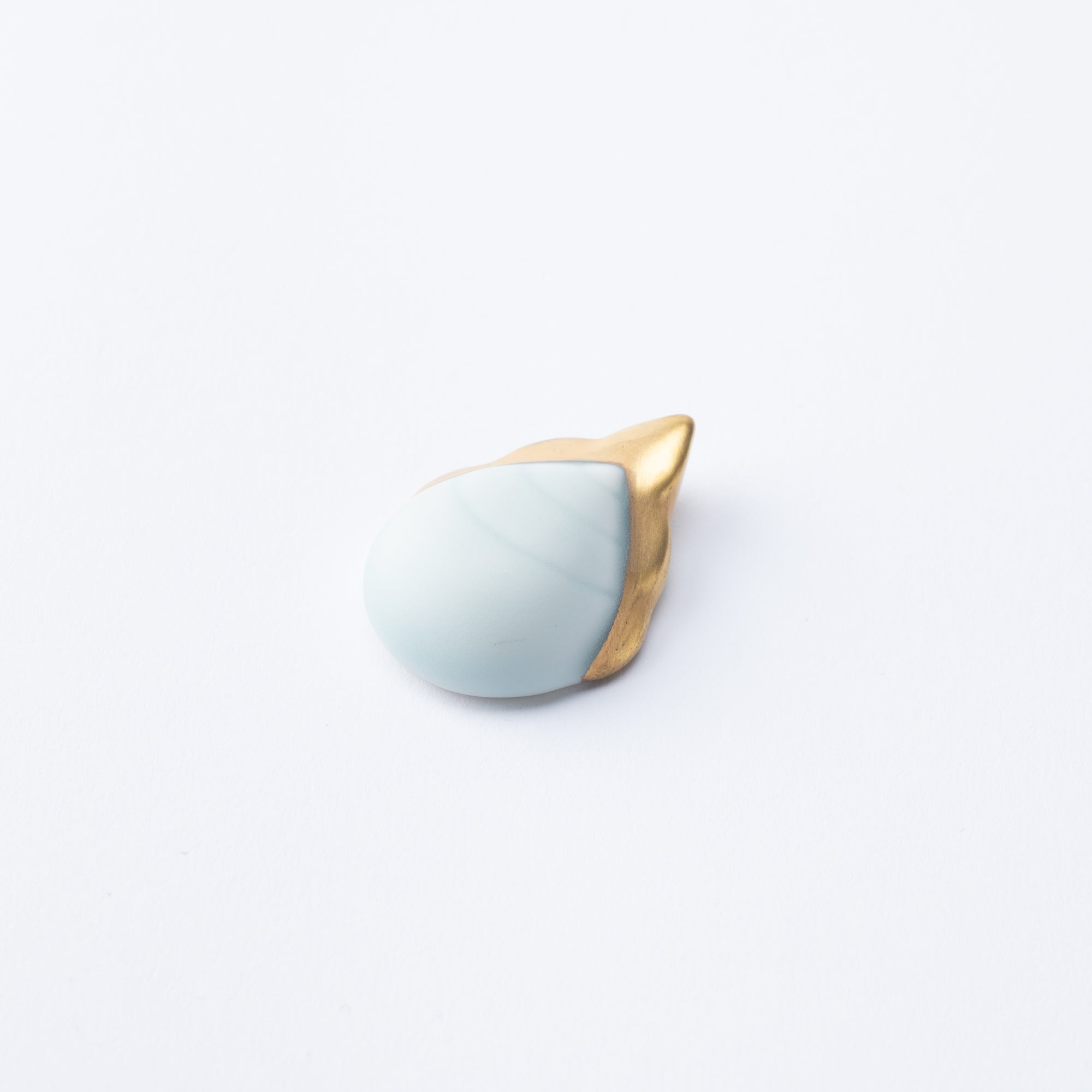
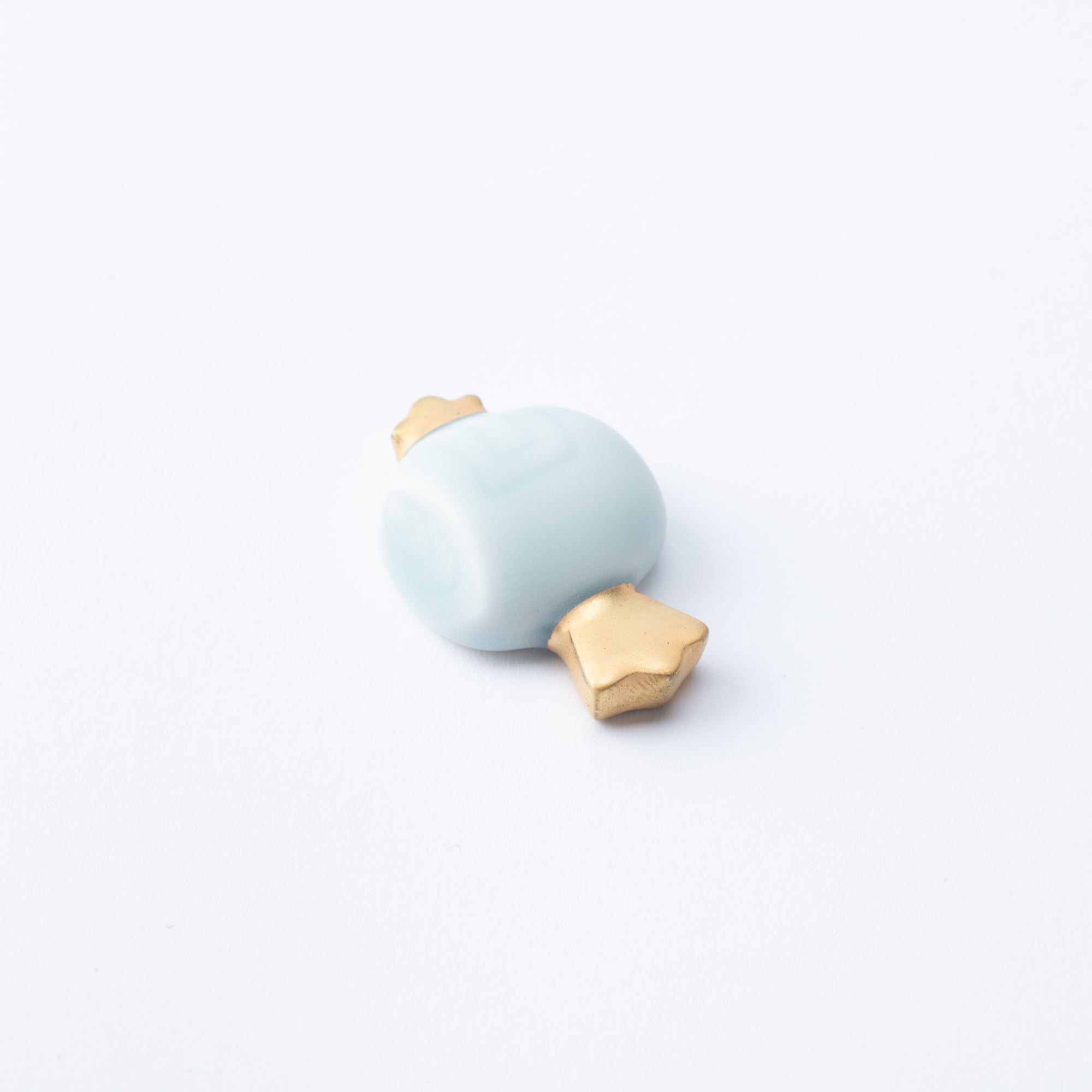

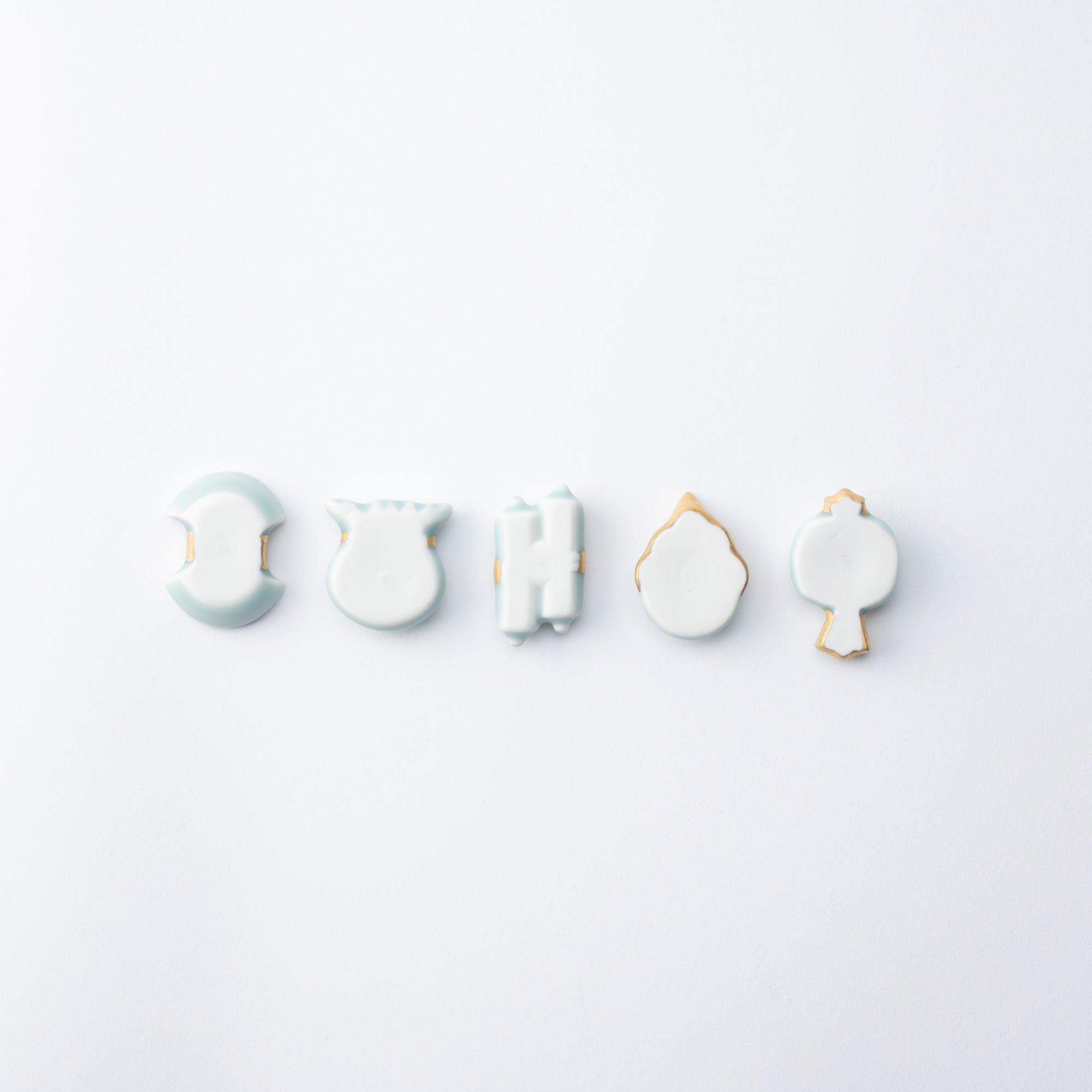
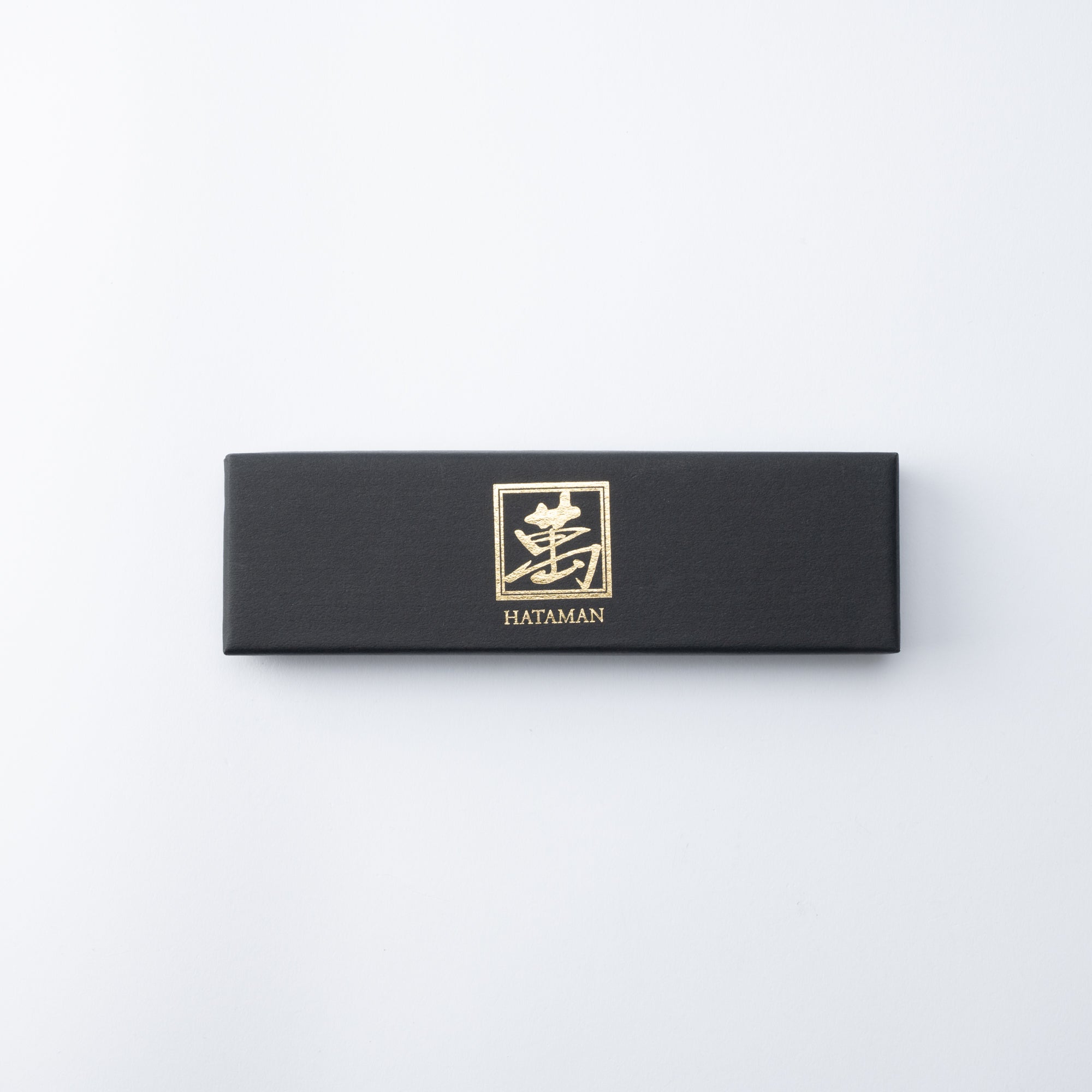
Moist Collection of Treasures Chopstick Rest Set
Estimated Shipping Widget will be displayed here!
This set of chopstick rests features motifs inspired by various treasures, bringing charm and meaning to your table setting. The graceful matte celadon texture conveys tenderness the moment you touch it, complemented by a moist and gentle surface finish.
The treasures depicted in this set include a counterweight, a treasure bag, a scroll, a wish-granting jewel, and a magic mallet. Originating from traditional Chinese patterns and introduced to Japan during the Muromachi period (1336–1573 CE), these symbols represent good fortune, wealth, and the hopeful notion that wishes can come true.
With their unique shapes and symbolic designs, these chopstick rests are striking additions to any dining space, seamlessly blending tradition with elegance.
DETAILS
| Quantity | 5 |
| Size | Approx. 4 cm (1.6 in) x 3 cm (1.2 in) |
| Material | Porcelain |
| Package Type | Paper box |
| Microwave | No |
| Dishwasher | Yes |
Maker / Brand
Hataman Touen inherits the rich history and techniques of Imari Nabeshima ware, a tradition spanning 370 years, while embracing the spirit of Japanese culture that enriches the heart and soul. They aim to embody Japanese aesthetics in a modern context and share their story and products with the world.
Crafts
Nabeshima ware is a type of porcelain crafted at the meticulously managed Nabeshima domain kiln. This kiln, which operated as a government-run project under the direct supervision of the Saga Nabeshima domain, flourished during the early Edo period (1603–1868 CE).
For approximately 250 years, Nabeshima ware was reserved solely and exclusively for shoguns and feudal lords, with the kilns producing exquisite pieces in styles like iro-Nabeshima (overglaze enamel), ai-Nabeshima (sometsuke), and Nabeshima seiji (celadon). After the feudal system ended, the kilns were privatized, welcoming new potters and giving rise to what is now known as Imari Nabeshima ware.
Choose options















Estimated Shipping Widget will be displayed here!
Chopstick Rests
Chopstick rests are the perfect way to enhance your table with a touch of Japanese style. A mix of everyday pieces and a few suited for special occasions keeps your table ready for any moment. We’ve selected handmade chopstick rests from across Japan to make your dining experience even more enjoyable. From playful shapes in porcelain to sleek metal designs, these small accents add distinct charm to any setting.
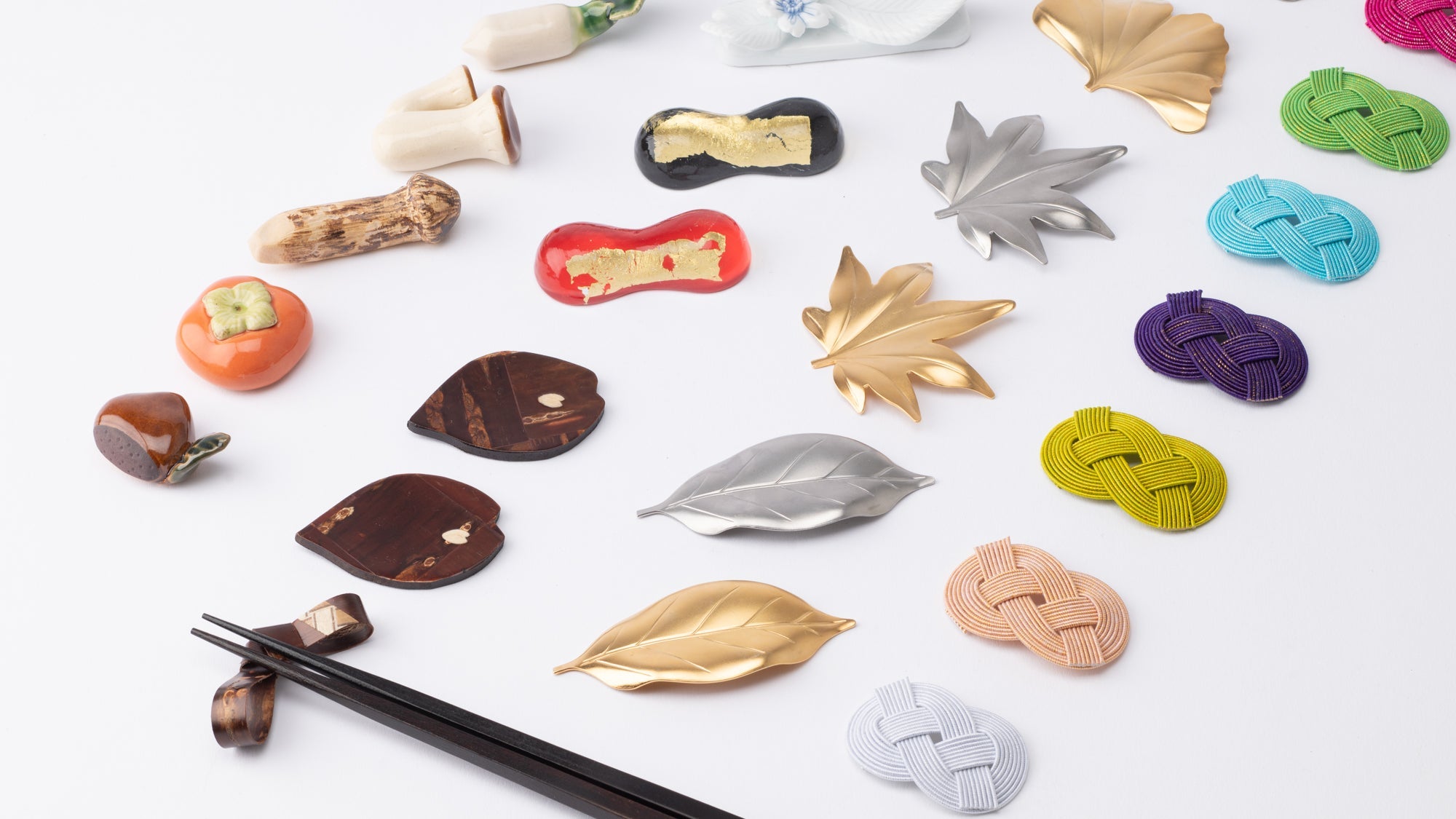
Celadon
Celadon porcelain originated in China and was introduced to Japan by the 10th century. Among the aristocratic classes at that time, celadon wares from China were regarded as the finest imported goods. They adored its mysterious blue and named it "secret-color."
Production of celadon ware began in the Hizen region, the northwestern part of present Kyushu in the early Edo period (1603 CE - 1868 CE), and the technique was later passed on to Kyoto and nearby areas. In 1957, the craft technology was designated a national intangible cultural asset. Celadon continues to be cherished and crafted by many potters and artisans today.
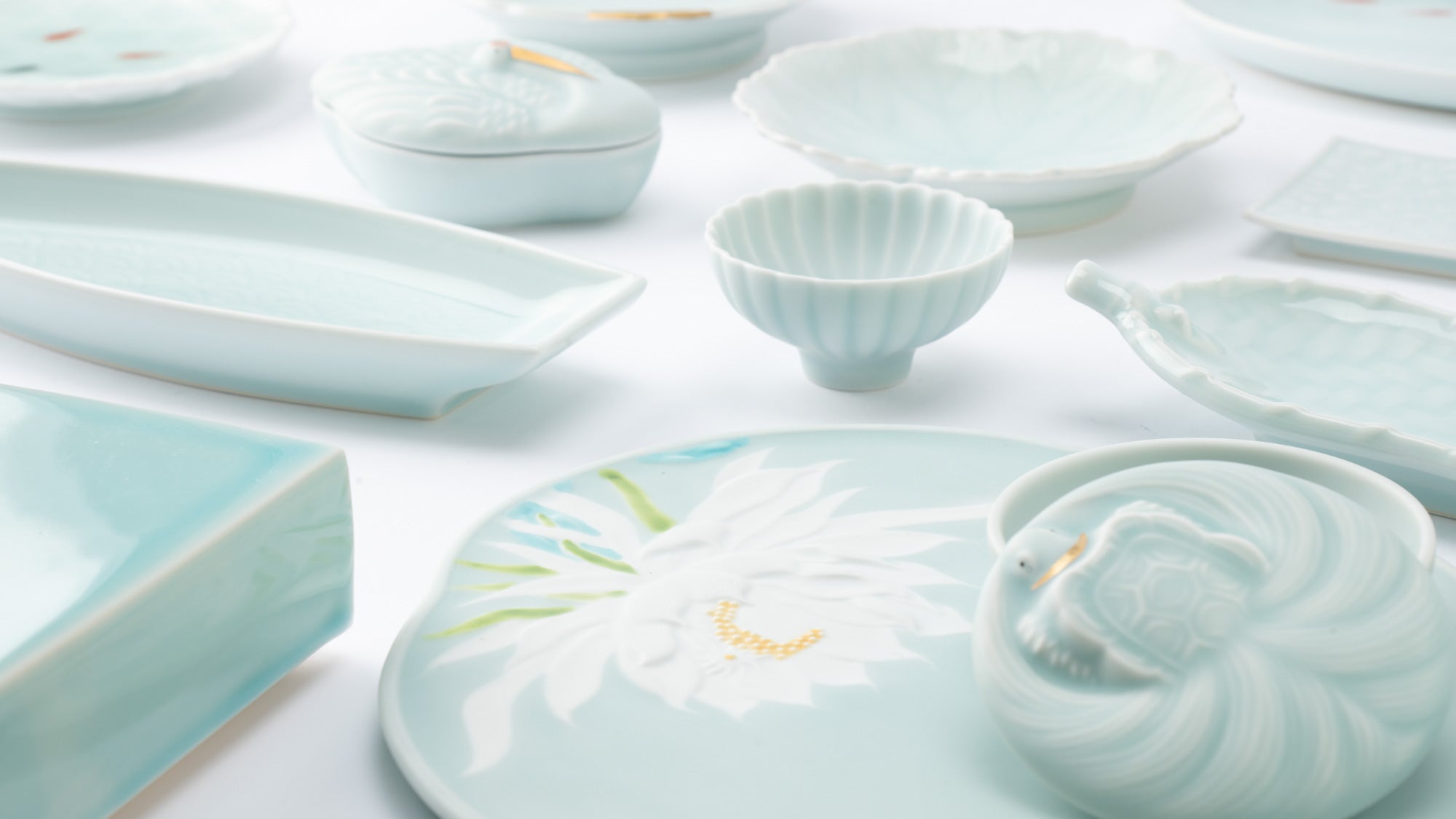
Guide to Chopstick Rests
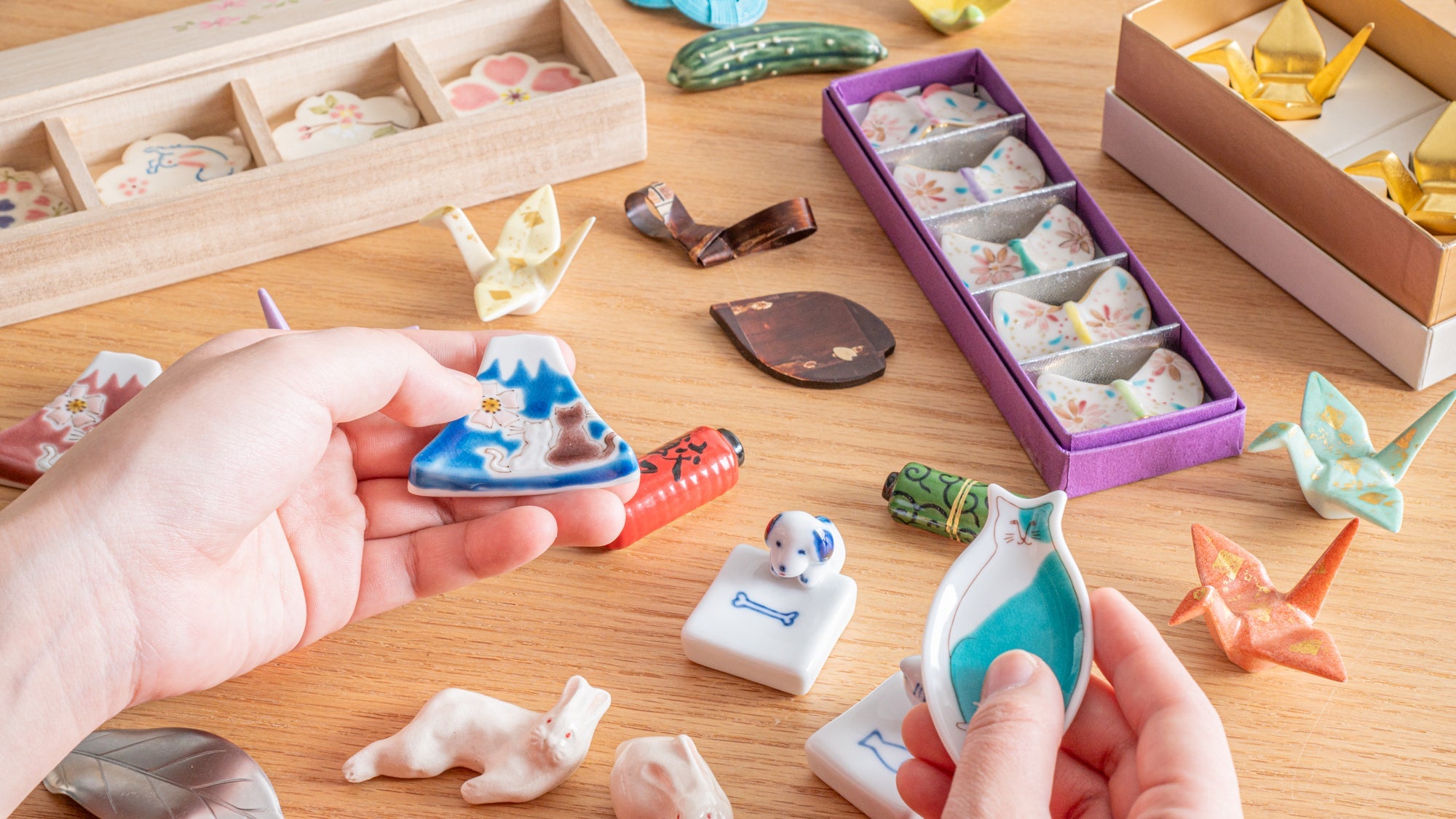
The Birth of the Moist Series: Inside Hataman Touen's Workshop

Sake Elegance: The Dance of Celadon on Gold



